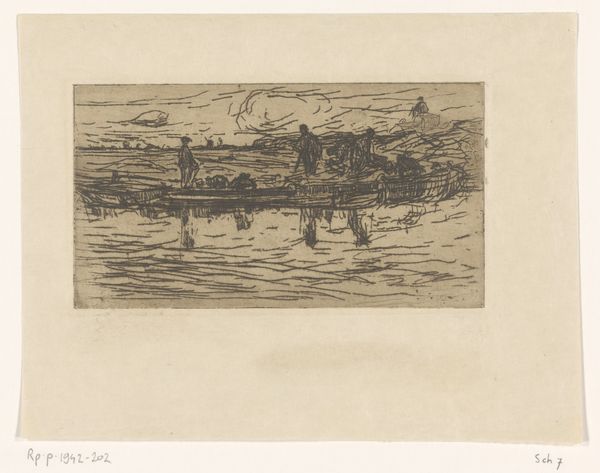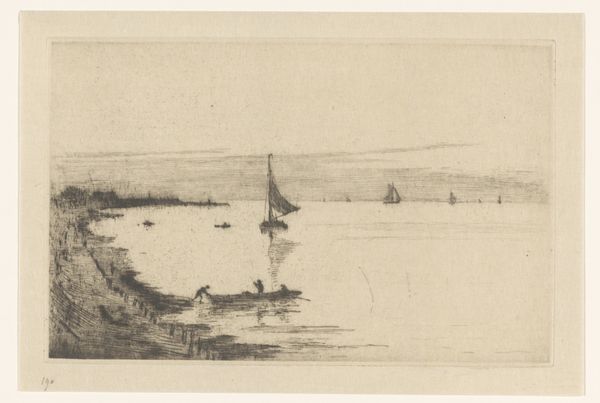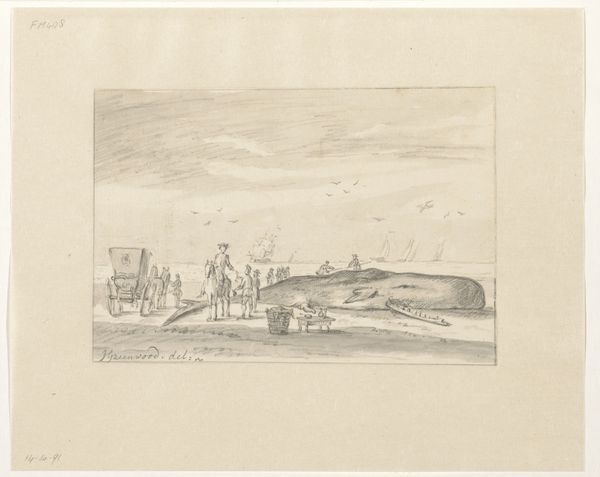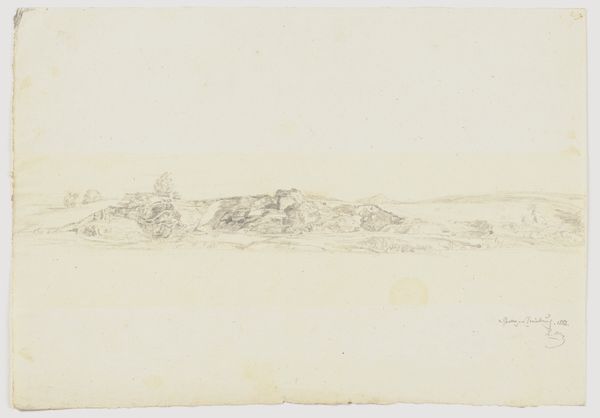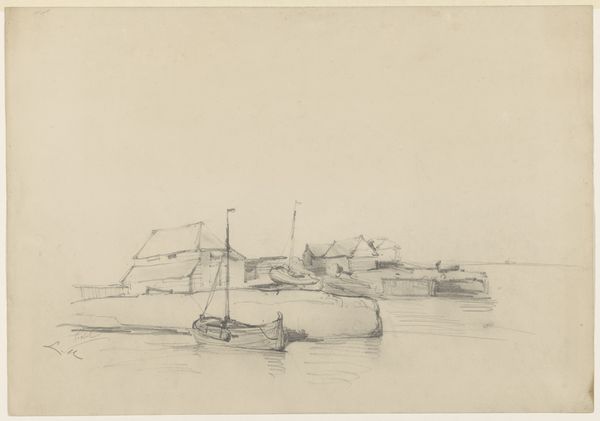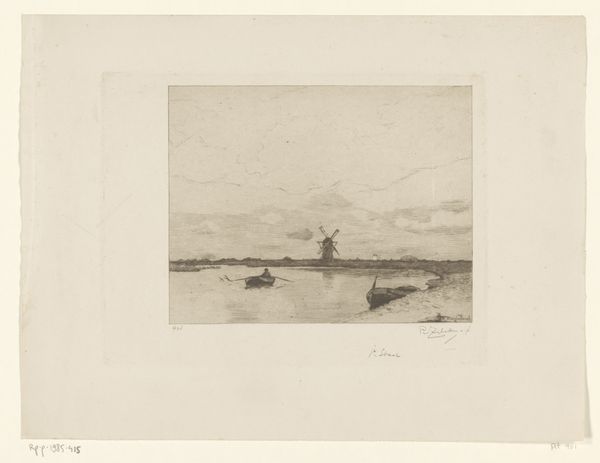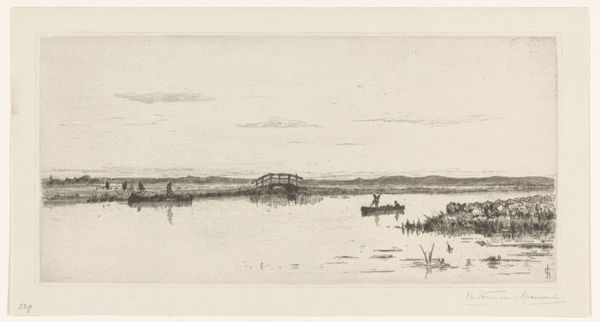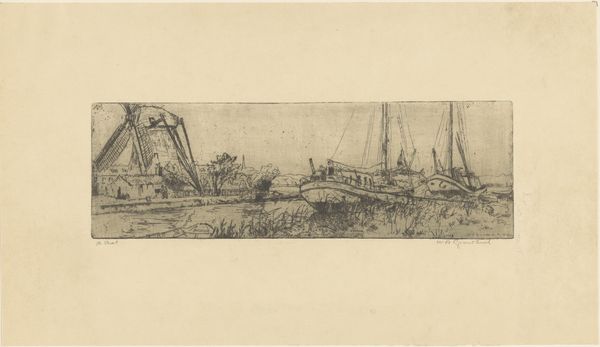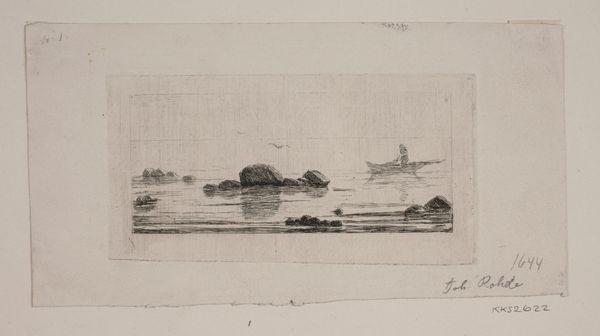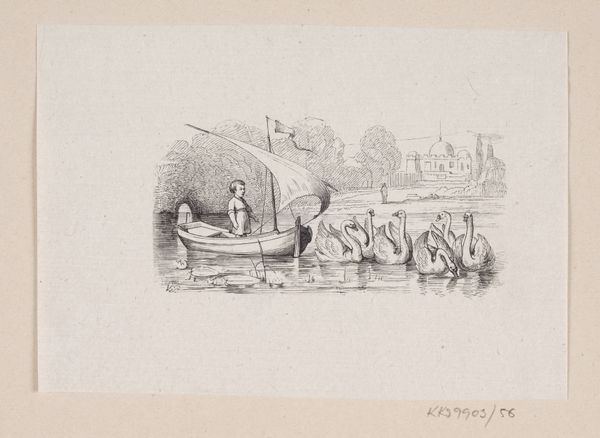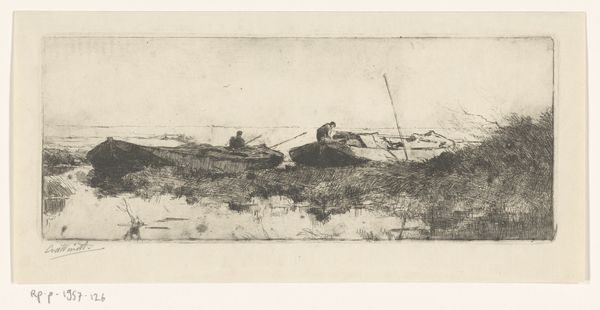
drawing, pencil, graphite
#
drawing
#
pencil sketch
#
landscape
#
river
#
pencil
#
graphite
#
cityscape
Dimensions: height 214 mm, width 326 mm
Copyright: Rijks Museum: Open Domain
Curator: Here we have "Brug te Avignon," or "Bridge at Avignon," a graphite and pencil drawing created sometime between 1872 and 1931 by Willem de Zwart. It’s a seemingly simple sketch. Editor: It does appear unassuming, but there’s something about its lightness that I find compelling. The pale graphite against the paper evokes a hazy afternoon and it speaks to a deep sense of history. Curator: Absolutely. The bridge itself, the Pont d'Avignon, is rich in history. Built in the 12th century, it famously only spans halfway across the Rhône River. It was an important medieval crossing point, enabling trade and pilgrimage. The structure took on many symbolic qualities due to its prominent public utility, which allowed commerce to flourish, in part because of its connection to the Papal Palace of Avignon. Editor: Indeed. Water under bridges is often thought of as representative of time flowing, transition. Here the architectural ruins are prominent – a monument to both human ambition and temporal impermanence. It almost feels like a meditation on how civilizations rise and fall. It projects a certain stoicism. The chapel situated atop, one can even interpret as symbolic of humanity's desire for some degree of stability, safety. Curator: Good points. Consider also the technique— the quick, impressionistic pencil strokes suggesting movement, and capturing the reflection on the water which speaks to the transience of life. Also, during this time the Dutch art scene was dealing with debates over artistic identity, with some promoting a return to traditional Dutch subjects and styles while others looked to international trends. In rendering this monument from Avignon de Zwart may have wanted to establish his place within the contemporary Dutch art scene as an international cosmopolitan painter, in addition to the work having a specific French subject. Editor: And yet the work's monochrome tonality and subtle handling have an unmistakable charm. This sketch possesses a kind of quiet, self-possessed dignity. Curator: Yes. A quiet strength drawn from the enduring presence of the bridge, witnessed by countless generations. Its simple, yet evocative, in drawing from deep, long histories. Editor: Precisely. It reminds us of the weight of history and yet conveys its wisdom softly. Curator: A fascinating reminder. Editor: Indeed. A wonderful piece.
Comments
No comments
Be the first to comment and join the conversation on the ultimate creative platform.

